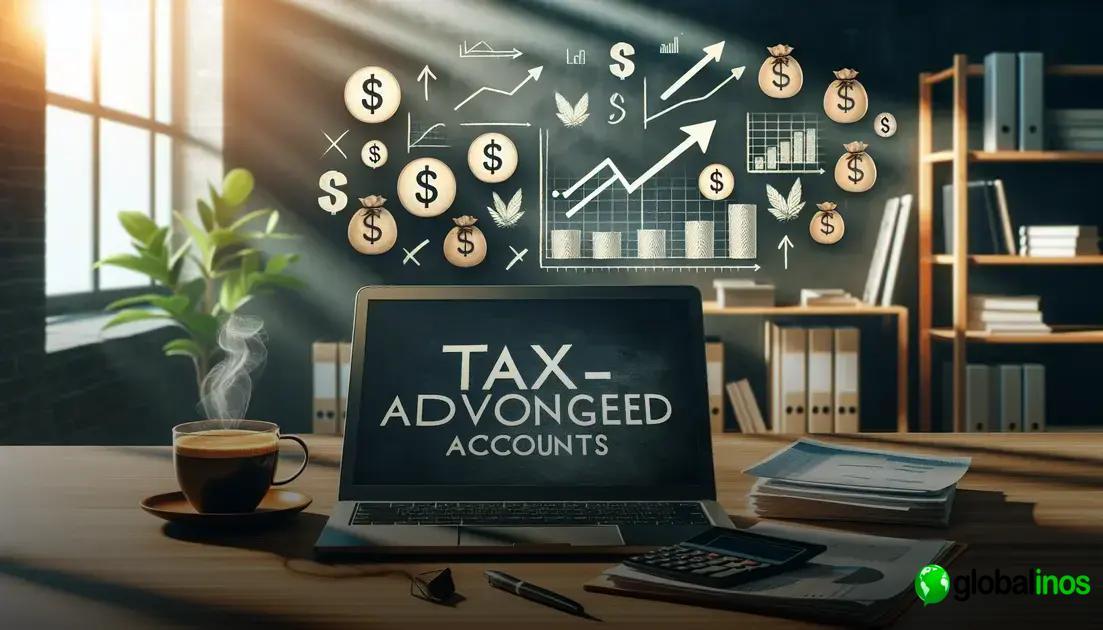Looking for effective tax-saving strategies? You’ve come to the right place. Understanding how to legally minimize your tax burden can save you a significant amount of money each year. By mastering a few key principles and making informed financial decisions, you can ensure that you keep more of your hard-earned money.
Understanding tax brackets and deductions
Tax brackets determine the percentage of tax you pay on different portions of your income. The more you earn, the higher your tax rate. For instance, if you’re in the 22% tax bracket, you’ll pay 22% on the income that falls within that bracket, not all of your income.
Deductions reduce your taxable income. Standard deduction is a fixed amount everyone can claim, while itemized deductions include expenses like mortgage interest, medical expenses, and charitable donations. Itemizing can be beneficial if your deductible expenses exceed the standard deduction amount.
Understanding tax brackets and deductions is crucial for effective tax planning. By knowing where you fall in the tax bracket and which deductions apply to you, you can strategically plan to reduce your overall tax liability.
Marginal vs. Effective Tax Rate
It’s important to understand the difference between your marginal tax rate and your effective tax rate. The marginal tax rate is the rate you pay on your last dollar of income, while the effective tax rate is your average tax rate, calculated by dividing your total tax paid by your total income. Knowing both can help you make informed financial decisions.
To maximize your tax savings, consider both the short-term and long-term tax implications of your financial choices. This dual focus can provide greater savings and a sound financial footing for the future.
Invest in tax-advantaged accounts

One effective way to save on taxes is to invest in tax-advantaged accounts. These accounts allow you to contribute money either pre-tax or get a tax benefit at the time of contribution. Examples include 401(k), IRA, Roth IRA, and Health Savings Accounts (HSAs).
By utilizing these accounts, you can either reduce your taxable income now or benefit from tax-free withdrawals in the future. For instance, in a traditional 401(k) or IRA, contributions are made pre-tax, lowering your taxable income in the year you contribute. With Roth IRAs, contributions are made with after-tax dollars, but withdrawals are tax-free during retirement.
Health Savings Accounts (HSAs) are another powerful tool. Contributions to HSAs are tax-deductible, and the earnings grow tax-free. Withdrawals are also tax-free if used for qualified medical expenses. This triple tax advantage can significantly enhance your savings over time.
Understanding how these accounts work and aligning them with your financial goals can optimize your tax savings. It’s essential to contribute the maximum allowed amount each year to fully utilize these benefits. Always check the contribution limits and ensure you are maximizing your opportunities for tax savings.
Additionally, some employers offer matching contributions to 401(k) plans, which is essentially free money. Make sure to take full advantage of any employer matches available to you.
Maximize retirement contributions
One of the most effective ways to maximize your retirement contributions is to make full use of tax-advantaged retirement accounts. These accounts, such as 401(k)s and IRAs, offer significant tax benefits either upfront or upon withdrawal. For example, contributions to a traditional 401(k) are made with pre-tax dollars, which can lower your taxable income for the year.
To get the most out of your retirement savings, aim to contribute the maximum amount allowed by the IRS. For 2023, the contribution limit for 401(k)s is $20,500, with an additional catch-up contribution of $6,500 for those aged 50 and older. For IRAs, the limit is $6,000, with a $1,000 catch-up contribution.
Company Match
Many employers offer a company match on 401(k) contributions, which is essentially free money. Make sure to contribute enough to take full advantage of this benefit. For example, if your employer matches 50% of your contributions up to 6% of your salary, you should aim to contribute at least 6%.
Roth vs. Traditional
Deciding between a Roth IRA and a traditional IRA depends on your current and expected future tax brackets. A Roth IRA is funded with after-tax dollars and grows tax-free, providing tax-free withdrawals in retirement. This can be beneficial if you expect to be in a higher tax bracket when you retire.
By strategically choosing and maximizing contributions to your retirement accounts, you can significantly enhance your retirement savings while enjoying immediate tax benefits.
Take advantage of tax credits

One of the most effective ways to reduce your tax bill is by taking advantage of tax credits. Unlike deductions, which lower the amount of your income that is subject to tax, tax credits directly reduce the amount of tax you owe. These credits come in various forms and target different aspects of your financial life.
If you have children, look for the Child Tax Credit and the Child and Dependent Care Credit. These can provide significant relief by lowering your tax liability based on expenses related to childcare.
Education-related credits like the American Opportunity Credit and the Lifetime Learning Credit can help offset the cost of tuition and other education-related expenses, making higher education more affordable.
For those looking into energy-efficient home improvements, the Residential Energy Efficient Property Credit offers benefits. This credit can be used for expenses related to solar panels, wind turbines, and other renewable energy sources.
Healthcare expenses can also offer tax relief. The Premium Tax Credit helps lower-income individuals and families afford health insurance purchased through the Health Insurance Marketplace.
Finally, don’t forget about credits for sustainable actions. The Electric Vehicle (EV) Credit rewards taxpayers who purchase a qualifying electric vehicle, helping both the environment and your bank account.
Consult with a tax professional to ensure you’re taking full advantage of these opportunities, maximizing your credits, and keeping more of your hard-earned money.
Plan for long-term tax savings
When aiming for significant tax savings over the long term, it’s essential to develop a comprehensive strategy that takes into account various financial instruments and future projections.
Utilize Tax-Efficient Investments: Consider investing in tax-efficient mutual funds or exchange-traded funds (ETFs) that aim to minimize tax liabilities for investors. These funds typically have lower turnover rates, reducing the amount of taxable gains each year.
Leverage Tax-Loss Harvesting: This strategy involves selling investments that have lost value to offset capital gains from other investments. It helps in minimizing overall taxable income.
Roth IRA Conversions: Converting a traditional IRA into a Roth IRA can be beneficial in the long run, especially if you anticipate being in a higher tax bracket upon retirement. Roth IRAs offer tax-free withdrawals, which can significantly decrease your tax burden in the future.
Estate Planning: Proper estate planning can ensure that your assets are transferred to your beneficiaries with minimal tax implications. Consider trusts, gifting strategies, and other estate planning tools to reduce estate taxes.
Review Your Plan Regularly: Tax laws and personal financial situations can change, so it’s crucial to review and adjust your tax-saving strategies regularly. A periodic review ensures that you remain aligned with your long-term financial goals and any new tax regulations.
By incorporating these techniques, you can build a robust plan that not only maximizes your current tax savings but also sets you up for a financially secure future.





